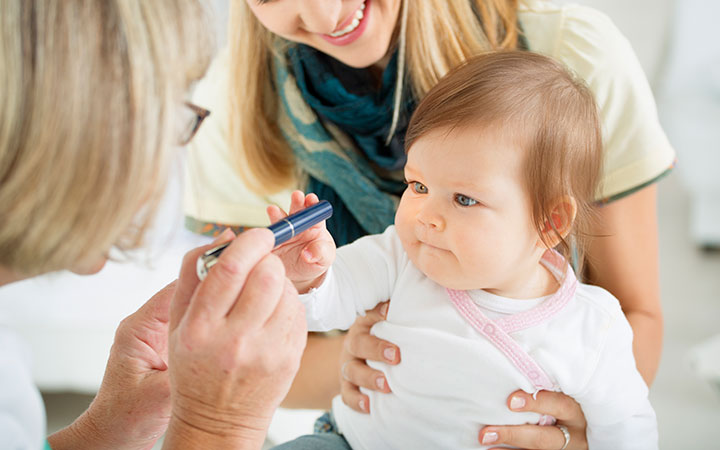How To Spot Eye Trouble In Your Child
June 11, 2019
 University Hospitals Rainbow Babies & Children'sExperts in Children's Health
University Hospitals Rainbow Babies & Children'sExperts in Children's Health


Healthy eyes give your child more than the ability to see clearly – they help your child understand and respond to the world around them.
A child with untreated eye problems is at risk for impaired learning and development, so it is imperative that any signs or symptoms of eye trouble are addressed immediately. The earlier your child’s eye problem is detected, the more likely it’ll be successfully treated.
Regular vision tests can help uncover many eye conditions. Signs of trouble could include:
- Inability to make steady eye contact when older than 3 months
- Crooked or crossed eyes
- Drooping eyelids
- Squinting or eye rubbing
- Difficulty reading
- White or grayish-white color in the pupil
- Eyes that flutter quickly from side to side or up and down
- Redness that doesn’t go away in a few days
- Complaints of headaches, eye strain or “seeing double”
Zoom In On The Cause
Your child’s eye doctor will probably use an eye test to determine the cause of any problems. The most common vision disorders among children are refractive errors, which cause blurred vision. Refractive errors are more commonly known as:
- Nearsightedness: when objects far away appear blurry
- Farsightedness: when objects nearby appear blurry
- Astigmatism: when objects at any distance appear blurry
If untreated, refractive errors may lead to a serious eye condition called amblyopia, or lazy eye, which can result in blindness. Treatment is most successful if given before the age of 7.
Screenings are Vital
“Your child’s eyes should be checked regularly by an ophthalmologist or optometrist and should be given the same level of attention as other standard medical care,” says Adam J. Peiffer, OD, MS, a pediatric optometrist with UH Rainbow Center for Women & Children. “Pediatricians do an excellent job screening for eye problems; however, screenings do not replace the need for regular comprehensive eye exams. Often, children do not complain about their vision because they do not know what ‘normal’ vision looks like.”
Whether or not your child has experienced eye trouble, Dr. Peiffer recommends making sure they get an eye exam at these ages:
- 6 months to 1 year
- About 3 years
- About 5 years
“If your child begins showing signs or symptoms of eye problems, let their pediatrician or eye doctor know," Dr. Peiffer says. "Even if no problems were detected at the last eye exam, your child may need another one. Visual needs change as your child grows.”
More than 20 percent of school-age children in the United States have vision problems. That means their ability to play on sports teams, excel in class and keep up with their peers may be significantly impaired. One recent study found that students who received proper vision screenings, exams and corrective eyeglasses were more likely to score better on comprehensive achievement tests.
Related Links
High-quality pediatric vision care and optical services are available at the UH Rainbow Center for Women & Children in Midtown Cleveland.


